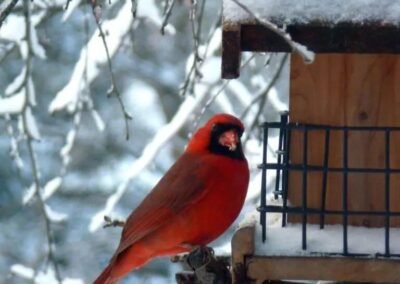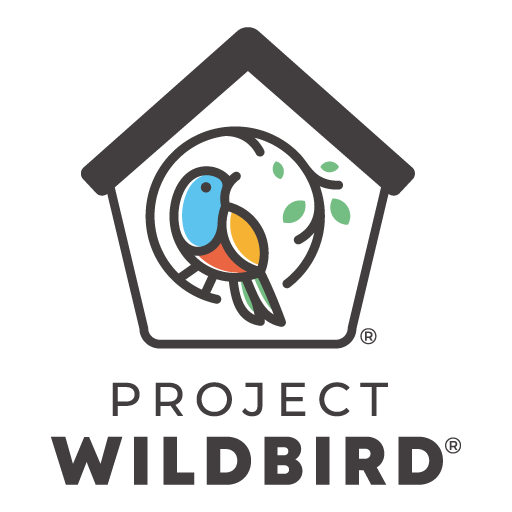The Art of Attracting Birds to Your Yard
No one becomes a great painter overnight. Time, research, and care are all necessary for any work of art, and the same goes for attracting birds to your yard, which is why the Wild Bird Feeding Institute (WBFI) is here to help. With these few tips, you will not only be contributing to the wellbeing of our feathered friends but also turning your yard into a masterpiece!

Finding Birds in Your Area
First, consider contacting your state or local wildlife agency. Second, consider joining a bird club, as advice from local bird lovers may offer greater insight than your state or regional agency. Next, download a FREE bird app like Merlin Bird ID or Audubon, as these apps can either identify a bird from a photo, or you can enter the details of a bird you were unable to photograph and each guide will offer helpful suggestions. To find recent bird sightings in your area, consider using the eBird app, which collects sightings from hundreds of thousands of bird enthusiasts. After you have revealed your local birds, it is time to create a bird paradise.
Making Your Yard Bird-Friendly
After discovering what local species may visit your bird haven, you can build your “bird-friendly” yard space, tailored to the birds of your backyard. You may be asking yourself, well what does “bird-friendly” really even mean? A “bird-friendly” place is an area in your yard that is safe from other animals (like outdoor cats), has treated windows, and has enough space and shelter for birds to explore your feeders, birdbaths, birdhouses, and plants. Download WBFI’s 6-Steps Guide for an easy, comprehensive list of how to turn your backyard into a sanctuary. Treat birds as new guests you are inviting to your home, and make sure everything is ready for their stay. The food you choose is important, but first, you need to know what birds you want to attract to your yard.
Putting out the Right Meal
Once you know which birds you want in your yard, use WBFI’s Food & Feeder Preference Chart from a comprehensive scientific study of the feed and feeder preferences of wild birds in the United States and Canada. You can easily access a local or online retailer of these food types by using WBFI’s Find A Retailer Map. When shopping online or in person, make sure that the bird food providers abide by the WBFI Quality Standards Program, to ensure that your seed and feeders are following the best standard practices.
If you are not necessarily looking for a specific type of bird, here are a few options to consider:
- Straight seed is just that – a package that contains only one type of seed such as Black Oil Sunflower or Safflower.
- A wild bird feed packer blends mixes and includes multiple types of wild bird feed designed to appeal to a wide variety of wild birds. The wild bird feed packer uses a recipe to ensure the consistency of the product year-round.
- Suet products are wonderful sources of fat that wild birds use for energy. You’ll find many flavors of suet at your wild bird store, so be sure to reference our Bird Feed Preference Chart to see which flavor you want to offer your birds.
- Seed cakes or bells are a tasty (to the birds) source of wild bird feed that is held together with a safe fixative. These products can be a bird feed mix or a straight seed. Like a straight seed or mix, refer to our Bird Feed Preference Chart to see which bird feeds appeal to the birds you want to feed.
- Mealworms (live or dried) which attract a wide variety of insect-eating birds
To get a variety of birds, it is best to use a combination of all feed types. It is also important to note that not every bird will like every mixture of bird seed. You may have some birds that enjoy different types of seed and do not prefer others. The beginning of your journey of attracting birds may feel like a trial-and-error experience, and that is ok. This kind of magic does not happen overnight and it may take time for birds to find your buffet. Depending upon the climate and region you are feeding in, some birds may be more frequent visitors during winter months when food sources are scarce than in summer months when natural food is abundant.
Don’t Forget the Water
Adding a water source to your yard is essential to attracting birds. Birds enjoy moving water, as it’s usually better quality and may catch their eye, but adding a simple pedestal bird bath to your yard will allow your feathered friends to bathe and stay hydrated. Make sure that you clean these bird baths as regularly as your feeder!
Making Sure Your Feed is for Birds Only
You also might be asking yourself; how do I make sure that this feed is exclusive to birds? The two most common animals that try and get into bird feeders are raccoons and squirrels. There are many ways to deter these animals, but one of the best ways is to make sure that your feeder is squirrel and raccoon-proof. One of the best ways to deter squirrels is to place your bird feeder in between two trees on a wire. Squirrels prefer an easy, safe meal and may avoid walking across the thin wires, and birds will feel welcome to eat from the bird feeder. The best way to deter raccoons is to make sure that there are no lingering food scraps at night and to be sure that your trash cans are fully sealed. There are also a variety of hanging and post-mounted baffles available that you can place on your feeder setup to deter squirrels and raccoons from accessing the feeder. By taking these small steps you can ensure that your bird feeders are a special place for the birds and the birds.
Taking Care of Your Feeders
Last, but most important, is to clean your bird feeder regularly to help avoid the chance of birds spreading diseases, specifically through bird droppings which can cause fecal-oral transmission. The best practice is to clean your bird feeder, at minimum, about once every two weeks. Having two sets of feeders to place out when you are cleaning or adding additional feeders to the yards can also help avoid birds congregating in one area. Find more information on WBFI’s #FEEDSMART Resources page.
Recent Articles
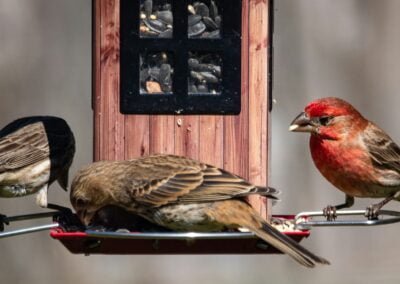
Fall in Love with Local Birds – Feeder Tips
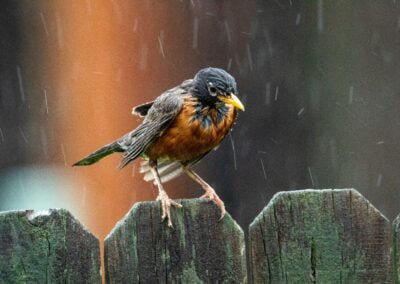
Fall in Love with Local Birds – The Importance of Year-Round Feeding

Fall in Love with Local Birds – Top Feeder Ingredients

Fall in Love with Local Birds – North American Non-Migratory Birds

Chasing Spring: The Marvel of Hummingbird Migration

2024 Great Backyard Bird Count Results
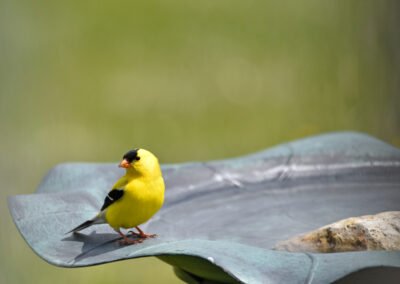
The Art of Attracting Birds to Your Yard
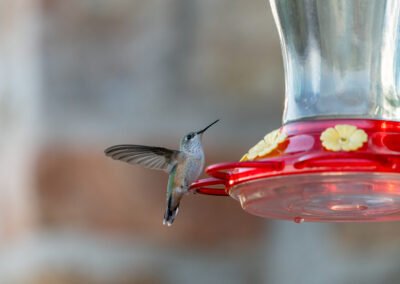
Why Bird Feeding is Important
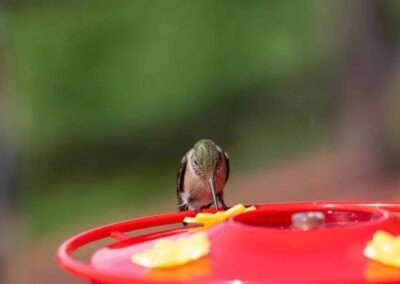
Hot Tips for Cool Birds: Caring for Feathered Friends During the Summer Heat
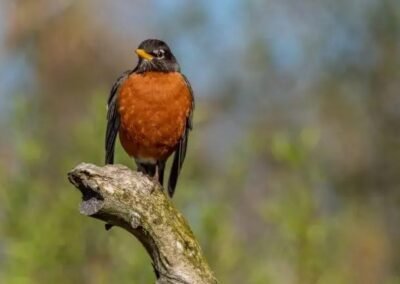
The Soothing Melody of Birds: Exploring the Mental Health Benefits of Nature’s Song
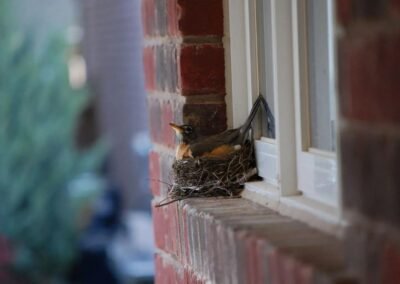
How To Stop Birds From Building Nests On Your House
